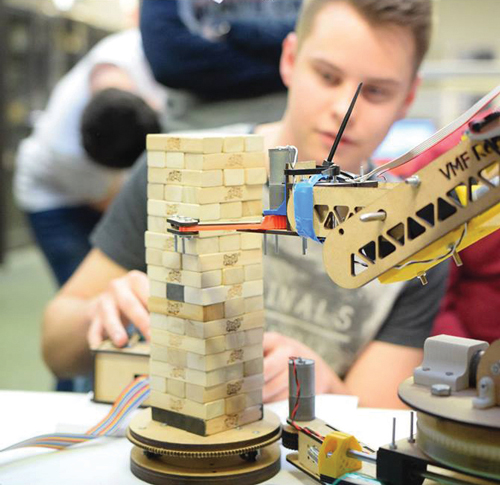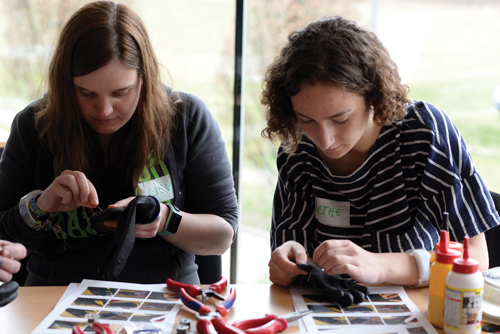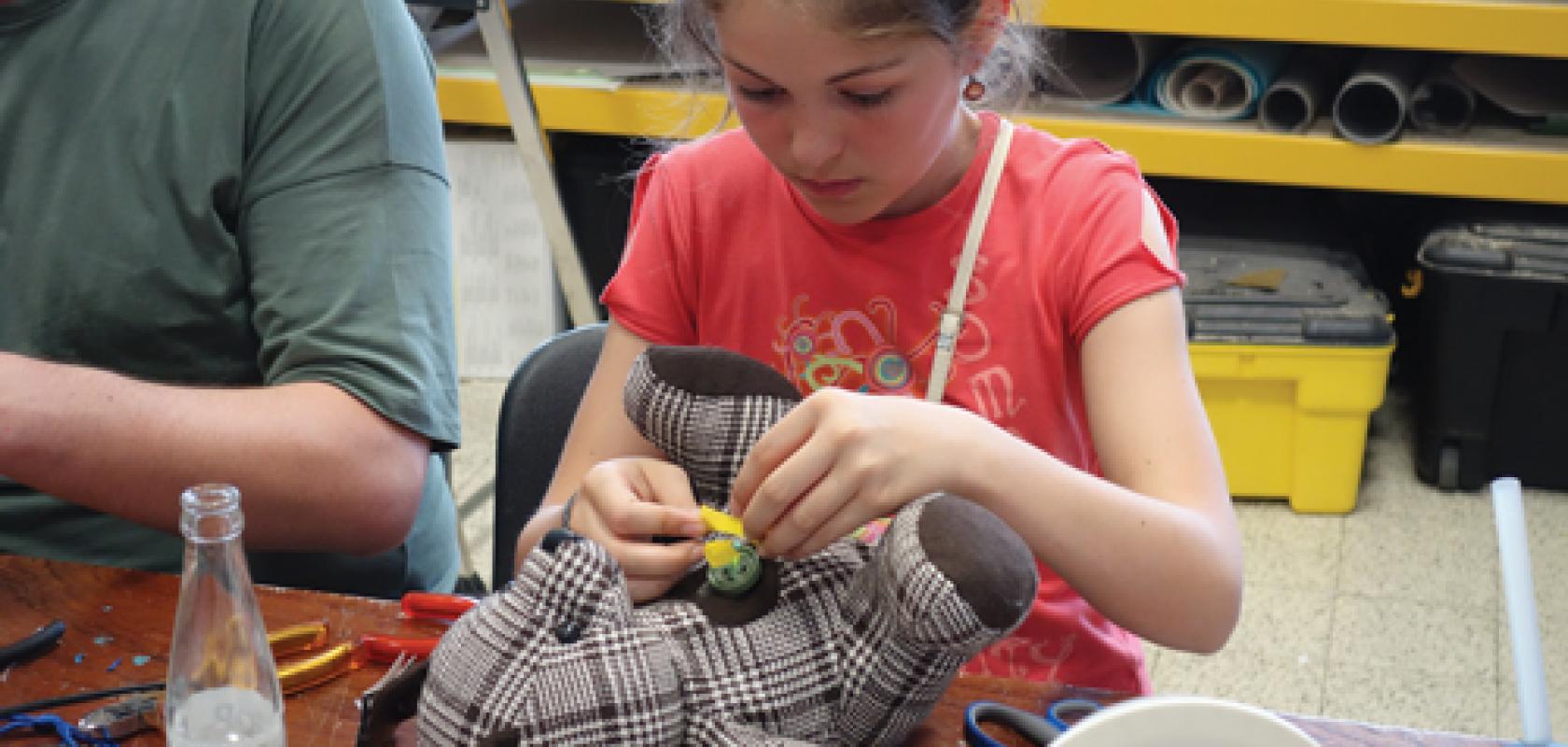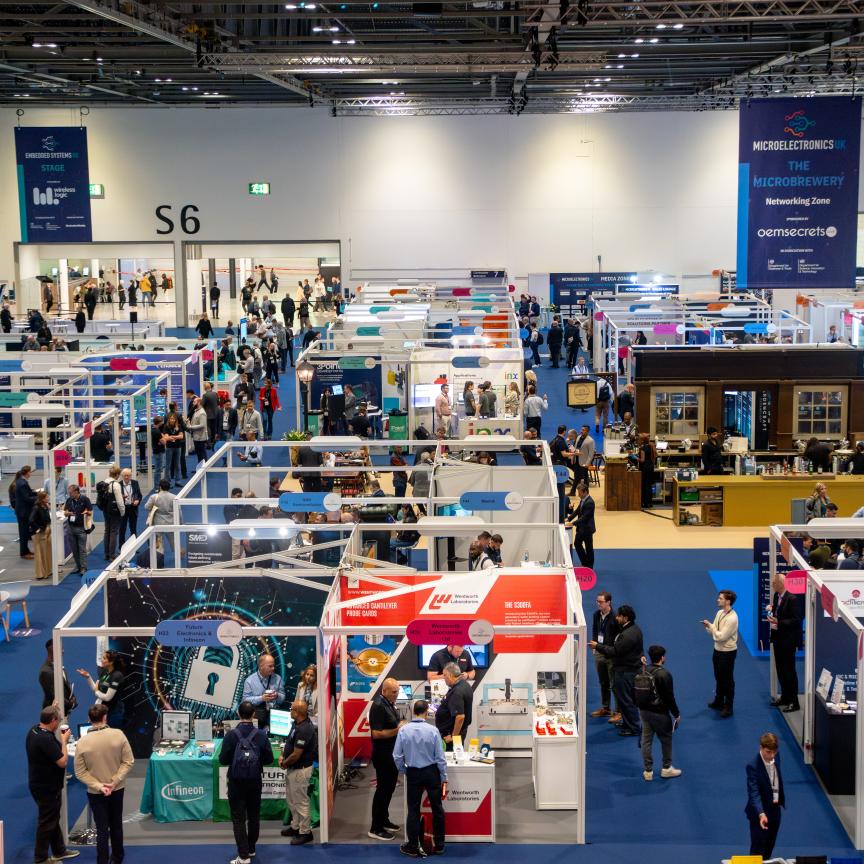Re-thinking how we teach and engage children in school may boost interest in optics and engineering among young people, finds Jessica Rowbury
A Belgian nonprofit association that aims to engage school children in photonics is shifting away from traditional teaching methods to attract more girls into engineering subjects.
The Excite Youth for Engineering, Science and Technology (Eyest) project designs and distributes experimental kits, lessons and workshops, so that young people – aged 10 to 18 – can go beyond the theory and experiment with lasers and optics. So far, more than 2,500 Photonics Explorer kits have been distributed to European teachers, supporting more than 125,000 European students each year.
The kits and workshops were carefully designed to get girls and other pupils that wouldn't typically choose engineering subjects interested. This involved making subtle changes to language, promoting a more collaborative and creative work environment, and moving away from the competitive nature of conventional education.
A shift from competition-based learning
According to Nathalie Debaes, CEO of Eyest, education systems typically favour masculine traits, which tend to excel in competitive, goal-oriented environments.
‘Where you put competition first – for example when you are designing the fastest cars or the highest rockets, or the most accurate tool – you will have no problem attracting boys. I’m not defining this specifically in terms of girls or boys, but rather masculine/feminine energy, which I think we all possess – but boys a little more,’ Debaes said.
‘This way of teaching and engaging students is not working for girls. For girls the “why” is important. How can photonics contribute to creating a better society, a cleaner environment, greater biodiversity? Or, how can it be used to help people? By highlighting the purpose behind building or taking part in something is how you ignite feminine ideas and interest.’
This element was considered in the language used when designing the framework of the experimental kits and workshops, Debaes explained: ‘We use less verbs and more adjectives to highlight the “why”’ behind the experiment – for example, “we will create a better, safer, cleaner society or environment”, and so on.’
The Photonics Explorer Kits each contain a set of optical experimental components for a class of 25-30 students, supported by a framework of worksheets, factsheets, teacher guides and multimedia material. Eyest trains science teachers how to use and plan lessons with the kit, which is available in 15 European languages.

An example of a Photonics Challenger Project (credit: B-Phot Brussels Photonics-VUB, Eyest, PhabLabs 4.0)
Along with the kits, Eyest – with EU project Phablabs 4.0 – has developed 33 photonics workshops and 11 challenger projects which can be organised in the classroom or in a fab lab/makerspace within the Phablabs 4.0 network. Challenges range from making an infrared glove to creating art using polarisation.
One of the workshops involves children bringing a toy – a teddy bear, for example – to the classroom, and integrating lights and optical fibres to make its eyes light up. Again, language was carefully considered to encourage girls’ participation.
‘You could talk about re-building or upgrading your toy, but that's more masculine. However, if you say: “make a toy for a friend so they will not be afraid of the dark”, then you ignite more of the feminine interest,’ said Debaes. ‘There is a shift in language there. Sometimes we are so programmed from a masculine society that it is not always that straightforward to think about ways we can word or design something – our natural way of thinking is quite biassed.’
Collaboration attracts feminine energy
Creating a collaborative learning environment also helps to make the workshops more inclusive, Debaes added.
‘The masculine is very strong in thinking strategically around a certain goal, but girls want to reach a goal collaboratively,’ she said. ‘The feminine way of learning and working is more process based – maybe we don't have all the right answers, but in a collaborative way, we will get there. And creativity and process thinking are involved quite heavily in that.
‘Unfortunately, our educational system is based more on the masculine aspects, good or bad – the learning process involves fairly rigid steps towards specific goals.
‘But that's not working for girls. With their language, care, creativity and scientific knowledge they want to contribute with others to achieve something purposeful. But as long as our educational system centres around competition and being the best, those attributes aren’t being nurtured.’

High schools use soldering and assembling skills to make an infrared glove (credit: B-Phot Brussels Photonics-VUB, Eyest, PhabLabs 4.0)
All children need to be given space to create, which is particularly important for igniting their interest in STEM subjects, Debaes added. When she was little, Debaes would spend hours playing with Lego bricks – creating her own ‘worlds’ with towns and cities that had spinning light-up elements and bridges that linked areas together.
‘Our youth nowadays do not have much free time where they can go in the woods and build something or explore. It's more virtually that they do this using technology. In the creation process it's so important to do things with your hands because it gives you confidence that you can make something or create something,’ Debaes said.
The role of the mother
Another important aspect the Eyest team considered when designing the kits and workshops was the mother-daughter relationship, which Debaes says is an important element in encouraging more girls into engineering, a subject sometimes perceived as harsh or too masculine.
‘The mother has a huge impact on the choice of study and career of the girls. Based on experiences the mother may have gone through as a woman, she might make assumptions about what a career as a scientist or engineer might involve. Or, worry about whether her daughter will be overloaded or if she will be happy in a male-dominated environment.’
For this reason, Eyest has held daughter-mother workshops to try and improve understanding of what science and engineering involves and to break old beliefs and stereotypes. ‘The mother gets to see her daughter programming, soldering, creating things and that she is enjoying it,’ Debaes said.
Girls tend to be less confident in themselves than boys, Debaes added, which means it’s important to have that push of your environment, which includes family.
One reason Debaes decided to study engineering was on the encouragement of her volleyball coach, who pushed her to apply for more advanced courses than she was initially applying for. ‘That's also typical - girls do not always have the confidence to reach higher,’ she said.
Further information
Eyest was founded in November 2011 by members of the Brussels Photonics Team of the Vrije Universiteit Brussel. The development of Eyest's educational programmes is financially supported by sponsoring companies and governments and is made available to teachers, students and schools. It works with 26 local partners (in different EU countries) who support the distribution and provide training of the Photonics Explorer kit in their region.


